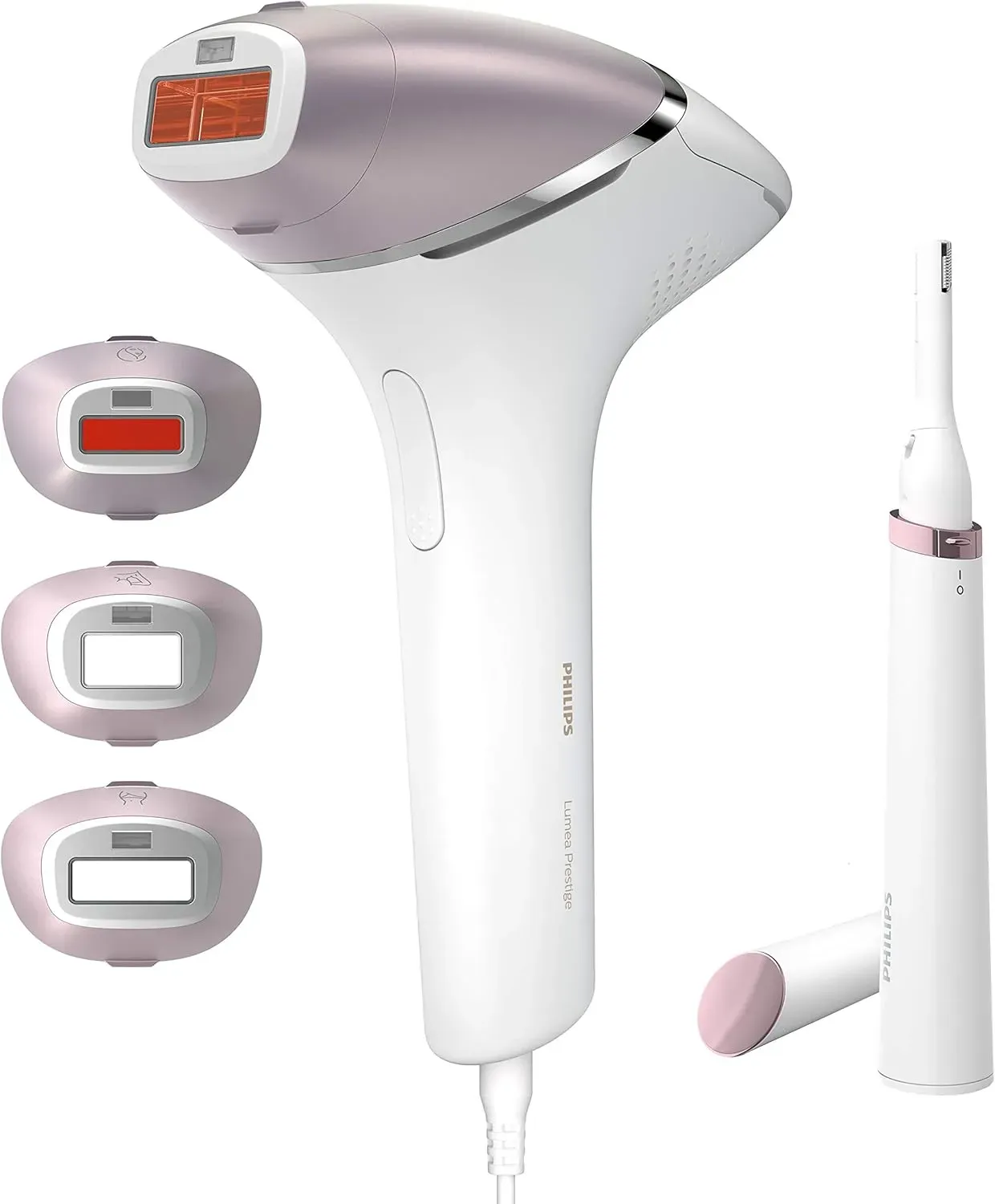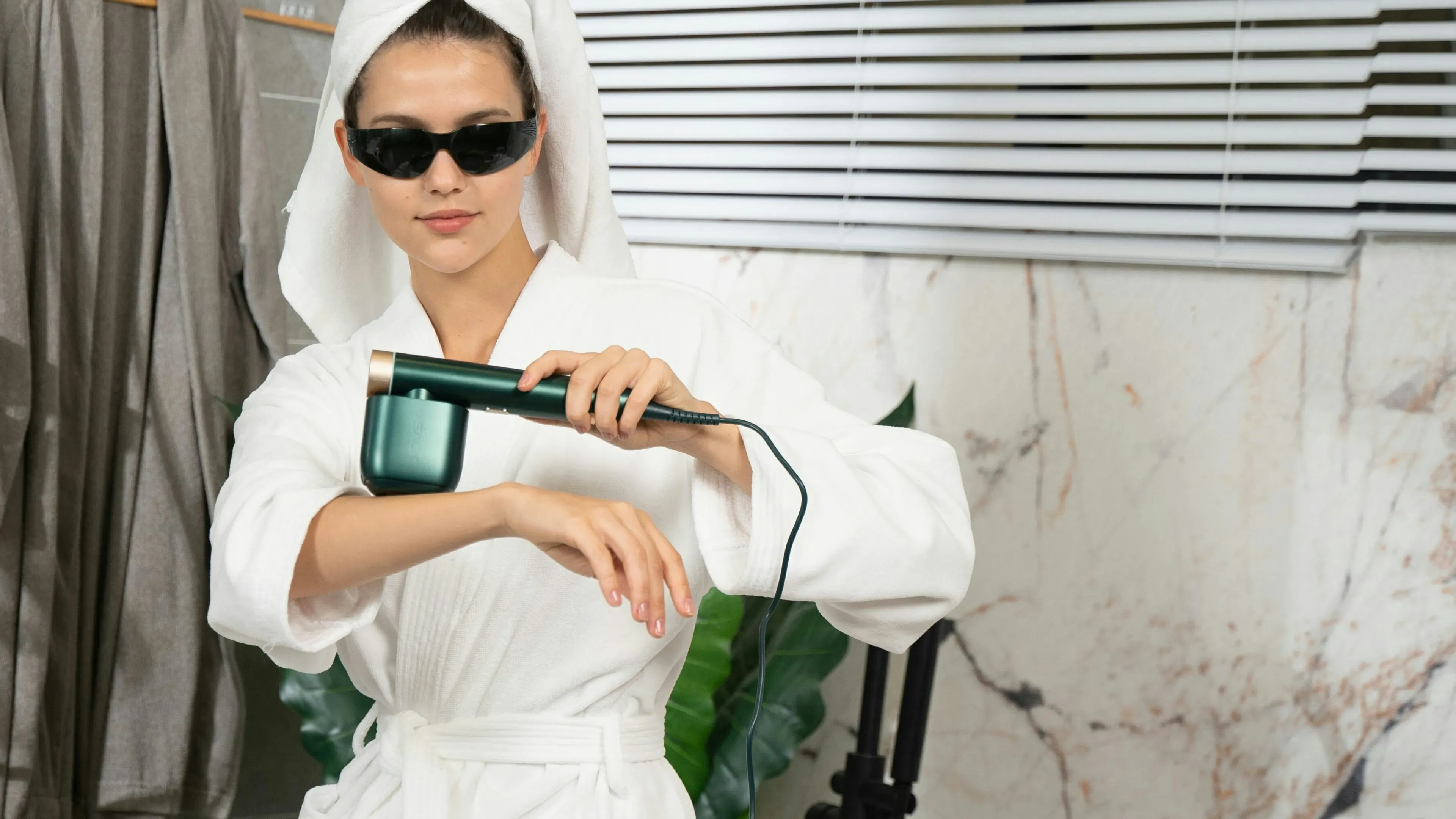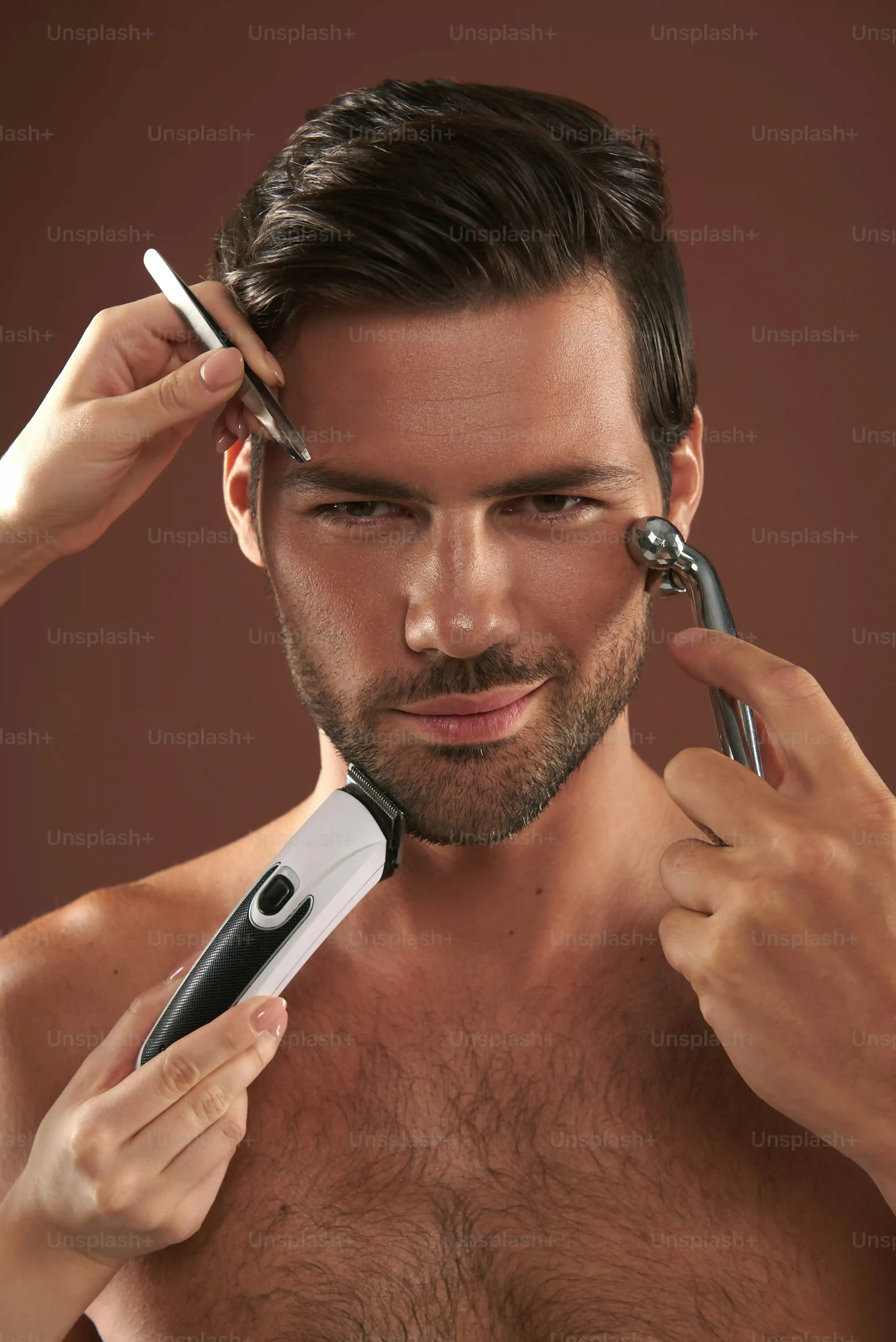Table of Contents
Let's be honest, the endless cycle of shaving, waxing, or plucking is a chore that most of us would happily ditch. The promise of smooth, hair-free skin without the constant effort sounds like a dream, and at-home devices claiming to deliver just that have flooded the market. When you start looking into options, Philips is a name that pops up repeatedly, often linked to searches for the best philips laser hair removal devices. But here's the first thing to understand: Philips Lumea devices, while popular and effective for many, use Intense Pulsed Light (IPL), not actual laser technology. It's a crucial distinction when you're trying to figure out if it's the right tool for your personal war on body hair.
What is Philips Lumea (It's Not Quite Laser)

What is Philips Lumea (It's Not Quite Laser)
so you're looking into the whole "laser hair removal at home" thing, and Philips Lumea keeps popping up. First off, let's clear the air: despite what some marketing might imply or what folks casually say, Philips Lumea isn't actually a laser. It uses something called Intense Pulsed Light, or IPL. Think of it less like a precise laser beam targeting individual hairs and more like a broad flash of light. This light energy gets absorbed by the pigment (melanin) in your hair follicles. When enough energy is absorbed, it heats up the follicle, damaging it and ideally slowing down or stopping future hair growth. It’s a different mechanism than a clinical laser, which uses a single wavelength of light aimed directly at the follicle. IPL hits a wider area with multiple wavelengths. This distinction matters because it affects who can use the device and how effective it might be on different hair and skin types.
Real Results: Is Philips Lumea the Best Philips Laser Hair Removal Alternative?

Real Results: Is Philips Lumea the Best Philips Laser Hair Removal Alternative?
Seeing the Initial Changes
so you've zapped away for a few sessions with your Lumea. What actually happens? Most users report noticing a difference after just two or three treatments. It’s not like suddenly all the hair vanishes. What you typically see is hair growing back slower. The texture might change, becoming finer. You might also start noticing patchy areas where growth is significantly reduced or stopped altogether. It's not instant gratification, but it's usually enough to make you think, " something is happening here." This early stage is where the device starts proving its worth, showing that the light energy is indeed impacting those follicles, even if it's not the clinical laser power you might get elsewhere.
How Fast is "Fast"?
The timeline Philips suggests is usually around four to six treatments, spaced a couple of weeks apart, to see significant hair reduction. Some people hit that milestone faster, maybe after just two sessions, especially if they have the ideal hair and skin type (light skin, dark hair). Others take the full six, or even longer. It really depends on your personal biology and how consistent you are with the treatments. Think of it like hitting the gym; you won't get six-pack abs after one workout. You need consistent effort. If you skip sessions or don't cover areas thoroughly, your results will be slower and less impressive. It's not magic; it's a process that requires commitment.
Long-Term Expectations and Maintenance
Now, here’s where the "alternative" part of "best philips laser hair removal alternative" really comes into play. IPL, including the Lumea, is generally considered a permanent hair *reduction* method, not permanent hair *removal*. That means the goal isn't zero hair forever after a few sessions. Once you achieve your desired level of reduction, you need to enter a maintenance phase. This usually involves using the device every 4-8 weeks, sometimes longer depending on regrowth. If you stop using it entirely, hair will likely start growing back over time, though often finer and sparser than before you started. It's a bit like weeding a garden; you can clear it out, but you have to keep on top of it to keep it looking tidy.
Using Philips Lumea: What to Expect (Pain and Process)

Using Philips Lumea: What to Expect (Pain and Process)
Getting Started and The Process
Alright, so you've got the box open, device charged, and you're ready to zap. Using the Philips Lumea isn't exactly complicated, but it takes some time, especially when you're first starting out and treating larger areas. You pick the right attachment for the body part (legs, underarms, face, bikini line), select your intensity level based on your skin tone using the built-in sensor or manual settings, and then you start placing the window against your skin. The device needs good contact to flash. You move it systematically across the area, flashing as you go. It feels a bit like a futuristic barcode scanner for your body hair. It's not a quick swipe; you have to be methodical to make sure you cover everything without overlapping too much or missing spots entirely. Doing a full leg session can feel like a mini-marathon for your arm holding the device.
The Sensation: Does it Hurt?
Now, the million-dollar question: does it hurt? For most people, it's not exactly painful, but it's definitely a sensation. The most common description is a feeling of a warm zap or a mild rubber band snap against the skin. It varies depending on the intensity level you're using and the area you're treating (thicker hair often means a stronger sensation). Areas with thinner skin or denser hair growth, like the bikini line or underarms, tend to feel it more than, say, your shins. Some people report a prickly heat afterwards. If it feels genuinely painful or hot, you might need to lower the intensity or check if the device is suitable for your skin tone. It's generally quite tolerable, especially compared to waxing, but don't expect to feel absolutely nothing. It's certainly a less aggressive alternative than some professional laser treatments, which can pack a more significant punch.
LongTerm Commitment: Maintaining Results with Your Best Philips Laser Hair Removal Device

LongTerm Commitment: Maintaining Results with Your Best Philips Laser Hair Removal Device
so you've gone through the initial few months, diligently zapping away, and you're seeing some real progress. The hair is thinner, sparser, and you're shaving way less often. Great! But here’s the deal: you’re not done forever. Maintaining those smooth results with your Philips Lumea, arguably the best Philips laser hair removal *alternative* for home use, requires ongoing commitment. Think of it like keeping a lawn looking good; you mow it regularly, right? With IPL, once you hit that sweet spot of significant reduction, you typically need to do touch-up sessions. Philips usually recommends maintenance treatments every 4-8 weeks, depending on how quickly hair starts to reappear for you. If you slack off or stop entirely, those stubborn follicles that were just stunned will eventually wake up and start producing hair again, maybe not as thick as before, but it will come back. So, while the time commitment drops significantly after the initial phase, it doesn't disappear entirely. It's a relationship, not a one-night stand.
Is a Philips Device the Best Philips Laser Hair Removal Choice For You?

Is a Philips Device the Best Philips Laser Hair Removal Choice For You?
Considering Your Skin and Hair Type
Alright, let's get down to brass tacks about who the Philips Lumea is actually *for*. Remember that IPL works by targeting melanin, the pigment in your hair. This means it's most effective on darker hair colors – think black, dark brown, or even medium brown. If your hair is light blonde, red, grey, or white, there simply isn't enough pigment for the light energy to absorb, so the device likely won't do much for you. It's like trying to catch a shadow; there's nothing substantial for the light to interact with. This is a hard truth for many, but it's better to know upfront than drop a chunk of cash on something that won't work.
Skin tone matters too. The Lumea has sensors and varying intensity levels, but IPL can be risky on very dark skin tones. The higher melanin content in darker skin can absorb too much light energy, potentially causing burns, discoloration, or scarring. Philips devices are designed to work on skin tones ranging from fair to medium-dark. They usually have charts or sensors to help you determine if your skin is compatible and which setting is safe. Ignoring this isn't brave; it's foolish and potentially harmful. Make sure you check the compatibility chart before you even think about plugging it in.
Here's a quick rundown of who typically sees the best results:
- Skin Tone: Fair to Medium-Dark
- Hair Color: Dark Brown to Black
Cost vs. Clinic: The Investment Angle
One of the big reasons people look into the best philips laser hair removal *alternatives* like the Lumea is the cost. Professional laser or IPL treatments at a clinic can be seriously expensive, running into hundreds or even thousands of dollars depending on the area and the number of sessions needed. A Philips Lumea device has a significant upfront cost, sure, often several hundred dollars. But once you own it, the cost per session is essentially zero (minus the electricity bill, which is negligible). Over time, especially if you're treating multiple areas, the home device can work out significantly cheaper than paying per session at a salon.
However, it's not a simple apples-to-apples comparison. Clinical machines are typically more powerful and might achieve faster or more complete reduction for some individuals. They are also operated by trained professionals who can adjust settings precisely and handle different areas safely. The Lumea is designed for consumer safety, which means it operates at lower energy levels than professional equipment. So, while the Lumea might be cheaper overall, you might need more sessions, and the results might not be as dramatic or permanent as with some clinical treatments. It's a trade-off between convenience/cost and potential power/speed.
Lifestyle and Commitment: Is it Practical?
Beyond skin and hair type and the financial outlay, you need to consider if using a home IPL device fits your life. Are you someone who can stick to a schedule? The initial phase requires treatments every week or two for a couple of months. That means carving out time regularly to treat all the areas you want to tackle. It's not a five-minute job, especially for larger areas like legs. Are you prepared for that commitment? Or are you more likely to forget, get lazy, and then wonder why it's not working?
The convenience of doing it at home, on your own schedule, in your own bathroom, is a huge plus for many. No appointments, no travel time, complete privacy. You can zap while watching TV (carefully, of course). But this freedom also requires self-discipline. If you prefer having an appointment booked to ensure you show up and get it done, a clinic might be a better fit. For those who value flexibility and are consistent with routines, the Lumea can be a great tool. If you're still weighing your options for professional services, a place like hairawaybylaser.com offers clinic-based treatments that might suit you better if the DIY route feels too daunting or doesn't match your needs after considering the Philips Lumea as an alternative.
The Verdict: Is Philips Lumea Your "Best Philips Laser Hair Removal" Dream?
So, circling back to the initial hunt for the best philips laser hair removal, let's be clear: Philips Lumea isn't actually a laser. It's an IPL device. For the right person – someone with suitable skin tone and hair color – it can absolutely deliver significant hair reduction and make a real difference in shaving frequency. However, it's not a permanent fix, and it demands ongoing sessions to keep things smooth. If you go into it understanding it's a commitment and not a magic wand promising zero hair forever after a few zaps, and you're a suitable candidate for IPL technology, it might be a solid alternative to professional treatments. Just manage those expectations; it's effective IPL, not true laser, and it requires dedication.
